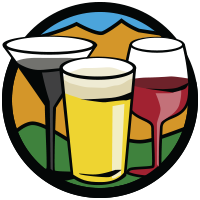Buy Your Favorite Scientist A Beer Today
Mike Laur - December 31, 2016
Science and art get all mixed up to make beer. For a long time, it was mostly art. Medieval monks were good at it, though their concoctions of barley, hops and water didn’t always turn out right. Alchemists of high order, quality-minded brewers of yore prized process and repeatability - hallmarks of scientific method. But the science part of beer was mostly hidden, until Louis Pasteur peered into a microscope and proved that little bitty living things were responsible for fermentation, and could be tamed and tuned. His work with yeasts and other tiny creatures - amongst the most beneficial science accomplishments of all time - helped fuel new fields of scientific inquiry, and helped spark a science revolution in beer making.
Doing good science is hard work, takes time, and doesn’t always have a happy ending. In their quest to develop an incandescent light, Edison and team tried more than three thousand different material combinations before they got it right. And good science costs money. Like scientists today, Pasteur depended on outside funding. Sugar beet producers financed early yeast research, and at one point Pasteur had corralled 10 percent of all grants given by the French Government.
As we celebrate scientists and science itself on Earth Day, 2017 - as hundreds of thousands of science supporters join the March for Science events across the world - let’s all raise a toast to the scientists, technologists, engineers and mathematicians that make our world better.
Cheers! Now, look closely at that glass and you’ll begin to see all the science and technology that goes into every beer. We won’t even go into the biology, chemistry, botany, metallurgy, psychology or myriad other sciences that all have impacts on 21st century beer making. Nope, we’re going on a rocket ride first.
There’s a Rocket in My Beer.
Space Technology is all around us - the modern world would not be modern without it. Cellphones, food, automobiles, healthcare, banking, video games, clothing - you name it, it’s probably got some form of technology originally developed for use in space that makes it better. NASA’s original charter in 1958 mandated that technology transfer would be part of future space exploration efforts, and we’re all better off because of it. Space technology and spinoffs come at a bargain price: less than one-half of one percent of our national budget is spent on space exploration. It’s all spent right here here on earth, too, and something we should be investing in more, not less…
(A disclaimer: We love science. We are pro-science. And we love space, which is one reason we are honored and humbled to be part of Space Foundation’s Space Certification Program. Now you know.)
Pour yourself another beer. All that deliciousness comes to you with the help of space technology. GPS to grow crops, advanced filtration to clean water, orbital welding to build breweries, air-curtain refrigeration to keep it cold - there’s a lot of space tech in every sip.
�" GPS is used by farmers in San Luis Valley (and everywhere else) to grow better barley, and earth imaging helps monitor crop and moisture conditions.
�" Advanced filtration techniques developed for clean water in space often help purify water that gets turned into beer. Plant-based wastewater treatments, used by New Belgium and other brewers, were originally developed and tested for use during extended manned space missions.
�" Orbital welding, perfected during construction of Apollo launch facilities, is used to fabricate the piping inside growing breweries around the world.
�" Ultra-tiny, ultra-precise calibration spheres, originally manufactured in microgravity onboard orbiting spacecraft, are used to calibrate brewer’s yeast counting instruments - helping improve beer production and quality control.
�" Photovoltaic panels, used to power operations at hundreds of breweries, were improved, perfected, and improved again through decades of space-based mission needs.
�" Robotic packaging and kegging lines use technology NASA developed to rove on distant worlds and assemble stations in space.
�" HACCP, first developed to ensure the safety of food on manned missions, is practiced in restaurants, brewpubs and manufacturing to help prevent disease spread.
�" Air curtains - another space spinoff - are used in retail stores to keep coolers cool and cold ones ready to buy.
�" Those 57 channels of weekend sporting events you see at your favorite sports bar? They’re bounced from geosynchronous satellites, 23,000 miles from the nearest football or baseball field.
Like we said: space technology is everywhere. In making our Beer, Wine, & Spirit Drinker’s Guide to Colorado, for instance, we used data captured from SRTM radar onboard Space Shuttle Endeavour (STS-99 in February 2000) to improve the accuracy and fine detail of our map graphics. And take a look at our 14er list. Pikes Peak, once measured (basically using sticks and chains) at 14,110 feet tall, today comes in at 14,115 feet tall. It didn’t grow. Teams of geodeticists used GPS satellite navigation systems to re-measure famous geographic features around the world, and today we use the updated, highly-accurate info in our table of 14ers.
For using space technologies like GPS and space-borne radar data, the Beer, Wine, & Spirit Drinker’s Guide to Colorado is officially recognized as a Certified Space Imagination Product by the Space Foundation’s Space Certification Program.
You can learn more about how space technology works for us everyday here on earth by visiting Space Foundation’s website...
You can learn more about how SRTM data is being enhanced and used around the world by clicking on this link to JPL/NASA...
You can buy your very own piece of space technology - and get FREE BEER - by clicking here, or by visiting one of our retailers statewide.
Cheers to scientists, mathematicians, engineers - go find one today, buy ‘em a beer, and let ‘em know that we know the math: Good Science = Good Beer.
